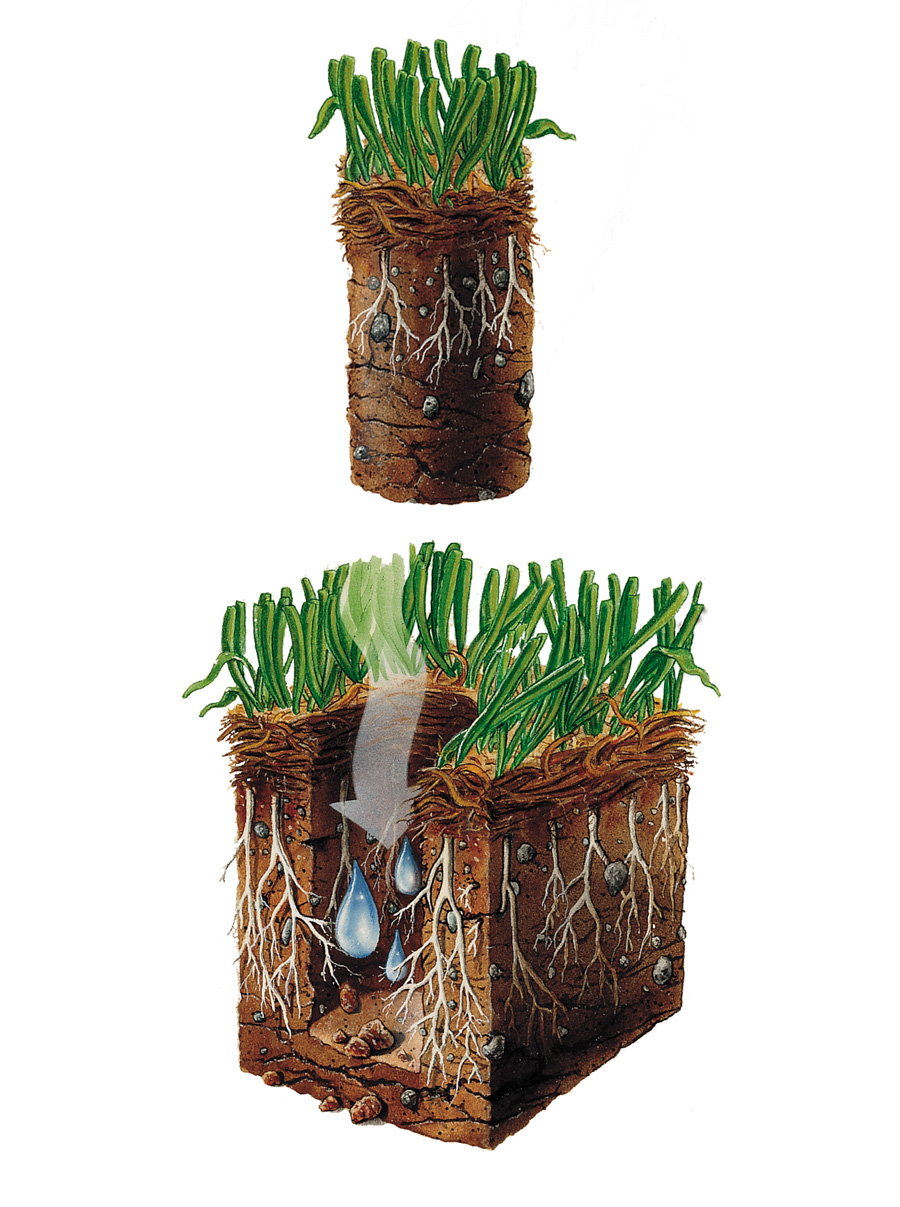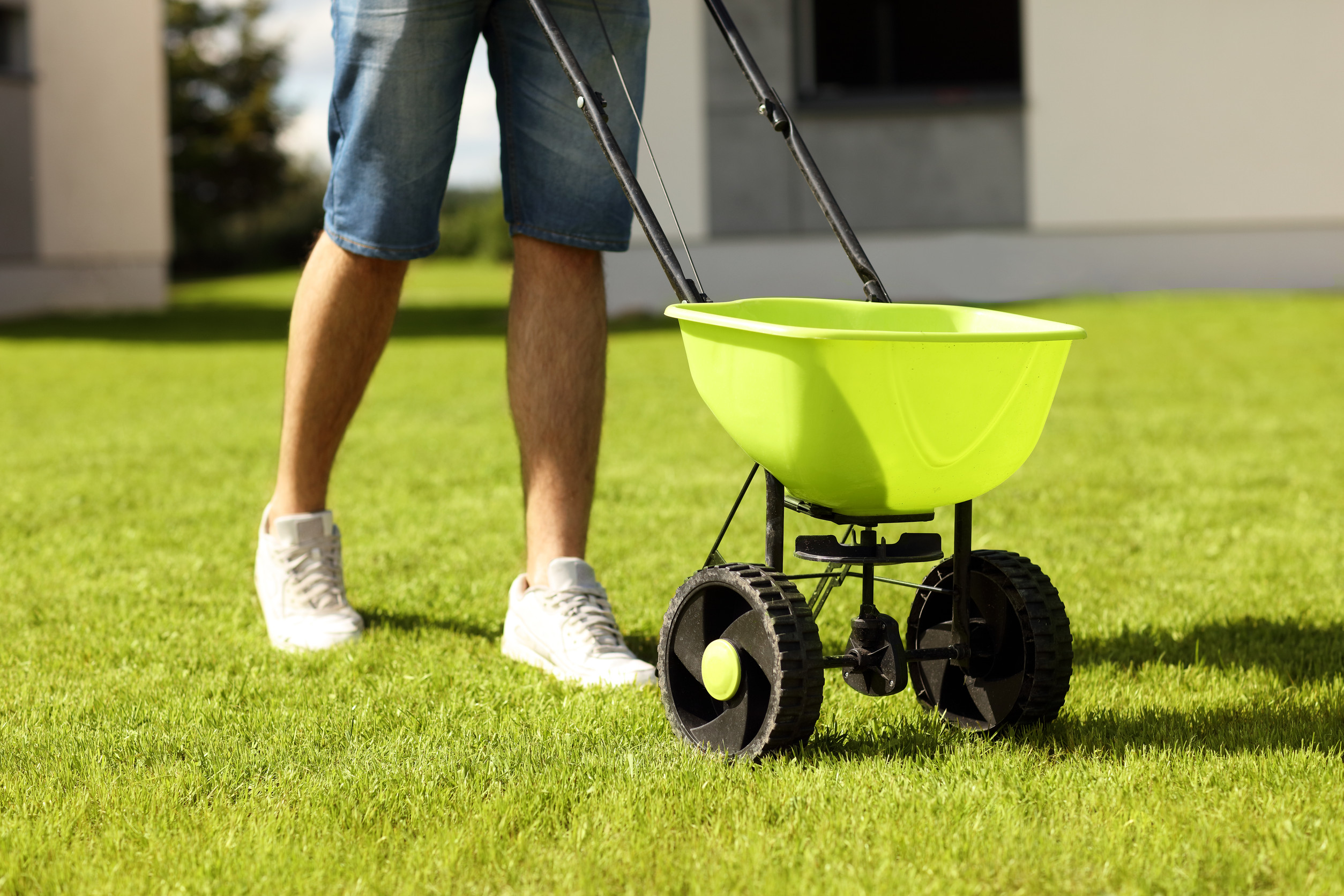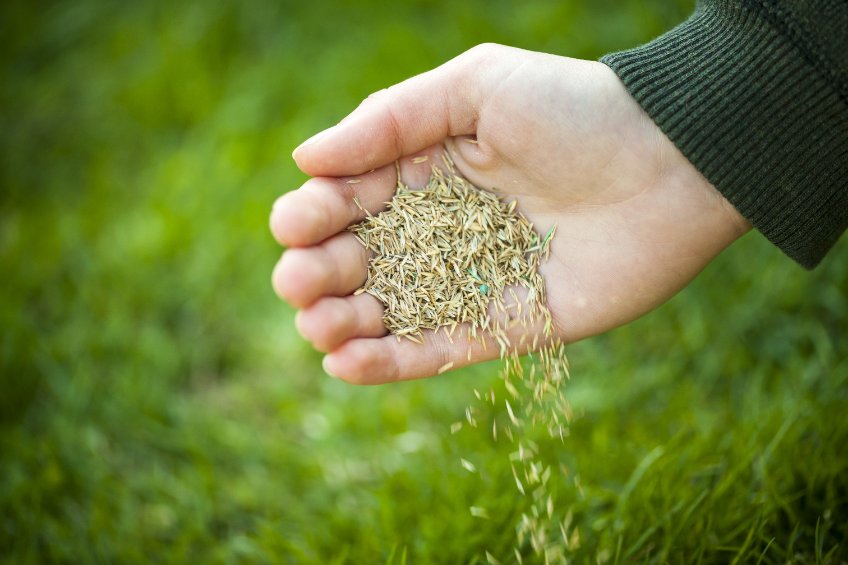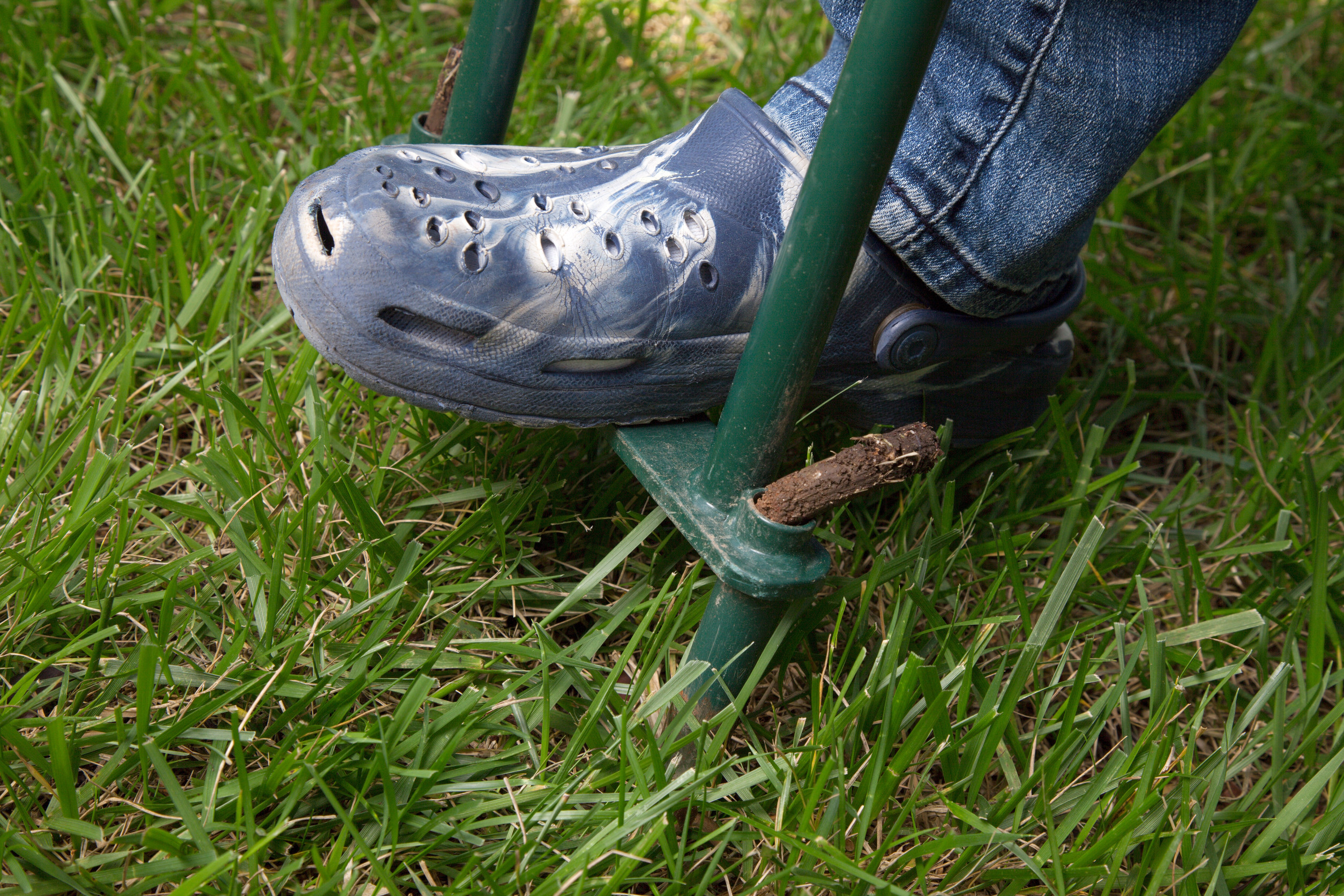After a long North Texas summer, your lawn may start to look thin, patchy, or tired. Fall is the perfect time to bring it back to life. Overseeding — spreading new grass seed over existing turf — helps fill in bare spots, improve density, and keep your lawn looking green and healthy year-round.
Here’s how to overseed lawn in fall.
1. Pick the Right Time
In North Texas, the ideal window for overseeding is late September through early November, when soil is still warm but air temperatures have cooled down. This allows new grass to germinate quickly and establish roots before winter dormancy.
2. Prepare Your Lawn
A little preparation goes a long way in helping your new seed take root.
-
Mow low: Cut your grass shorter than usual, around 2 inches, and bag the clippings so the new seed can reach the soil. Read up on lawn mowing tips from University of Minnesota Extension.
-
Rake or dethatch: Remove built-up thatch and debris to give the seeds direct contact with the ground.
-
Aerate the soil: Aeration opens small holes in compacted soil, allowing air, water, and nutrients to reach the root zone — and creating perfect seedbeds for new grass.

As Ryno Lawn Care explains, “Fall is the ideal time to prepare your lawn for next spring because cooler temperatures and increased moisture help the soil recover and grow stronger roots.” If you’re not sure what other steps to take before seeding, check out this helpful guide on what to do to your lawn in fall.
3. Choose the Right Grass Seed
Select a seed blend that matches your existing turf and thrives in North Texas conditions. Bermuda, Zoysia, and Fescue varieties are all strong options, depending on your sun exposure and watering habits. Look for high-quality seed labeled for “overseeding” to ensure strong germination rates.
4. Spread the Seed Evenly
Use a broadcast or drop spreader to apply the seed evenly across your yard. For best results, make two passes in opposite directions — one north to south, and one east to west. This ensures full coverage and prevents uneven patches.
After spreading, lightly rake the area or run a lawn roller to press the seed into the soil. This step helps ensure the seed stays in place and gets the contact it needs to sprout.

5. Feed for Strong Growth
Once the seed is down, give your new grass a boost with a starter fertilizer. Fertilizer helps young seedlings grow strong roots and build resilience before winter arrives.
For expert guidance and professional care, explore lawn fertilization services. The right nutrients can make a big difference in how quickly and evenly your lawn fills in.
6. Water Wisely
Water lightly but often after seeding — usually once or twice a day for the first week or two. The goal is to keep the soil consistently moist, not soaked. Once the new grass reaches about 2 inches in height, reduce watering frequency but increase duration so the roots grow deeper.
7. Maintain and Protect
-
Stay off the grass: Avoid walking on newly seeded areas until the grass is established.
-
Delay mowing: Wait until your new grass reaches about 3–4 inches before mowing, and use a sharp blade at a high setting.
-
Skip weed control for now: Herbicides can harm tender seedlings, so wait until the grass is mature before applying any weed treatments.
Putting down mulch is a great fall yard activity. Putting down mulch in the fall helps protect your soil and plant roots through the cooler months, keeping moisture in and insulating them from early frost. Read our blog post on how to properly put down mulch.
How to Overseed Lawn in Fall
| Step | Key Action | Details & Tips |
|---|---|---|
| 1. Timing | Overseed in Fall | Ideal Window: Late September – Early November. Warm soil and cool air create perfect conditions for seed germination and root growth before winter. |
| 2. Preparation | Prep the Lawn | Mow Low: To ~2 inches and bag clippings. Rake/Dethatch: Remove debris for seed-to-soil contact. Aerate: Loosen compacted soil to create seedbeds. |
| 3. Seed Selection | Choose the Right Seed | Select a high-quality blend that matches your lawn (e.g., Bermuda, Zoysia, Fescue). Look for seed labeled for “overseeding.” |
| 4. Application | Spread Seed Evenly | Use a broadcast or drop spreader. Make two passes (north-south, then east-west) for full coverage. Lightly rake or roll to press seed into the soil. |
| 5. Nutrition | Apply Fertilizer | Use a starter fertilizer to boost root growth and build resilience in young seedlings before winter. |
| 6. Watering | Water Wisely | Initially: Water lightly 1-2 times daily to keep soil moist. After Germination: Reduce frequency but increase duration to encourage deep root growth. |
| 7. Maintenance | Protect New Grass | Stay Off: Avoid foot traffic until established. First Mow: Wait until grass is 3-4 inches tall. Weed Control: Skip herbicides until the new grass is mature. |
Overseeding your lawn in fall is one of the smartest things you can do for a healthy lawn come spring. And now, you also know how to overseed lawn in fall. With cooler weather, warm soil, and fewer weeds, this season provides the ideal growing conditions for new grass to take hold.






